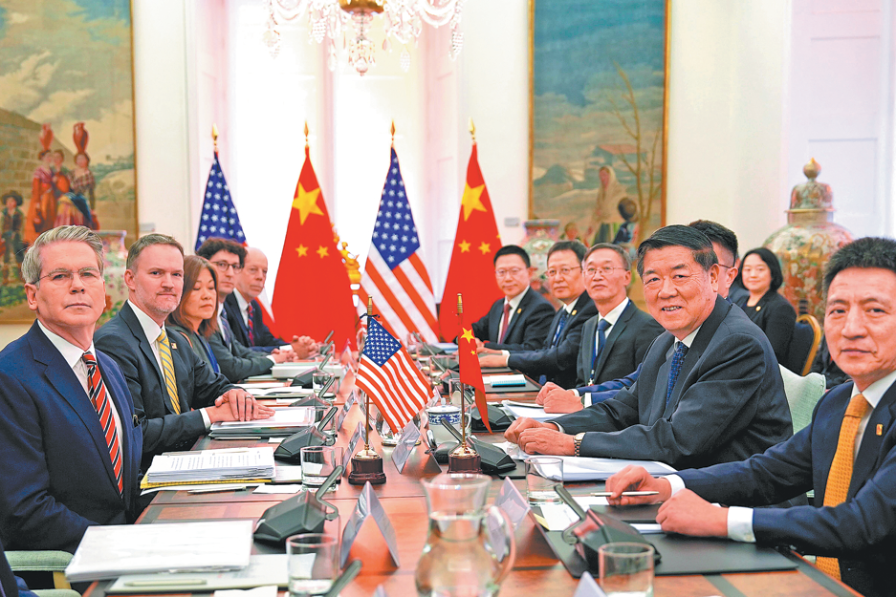Measure for measure
Some important climate change and biodiversity plans were made in 2022


Some important climate change and biodiversity plans were made in 2022
The end of 2022 saw two major events to solve the problems of global climate change and biodiversity loss threatening our planet and the lives of people on it. In November signatory countries to the United Nation's Climate Change Convention met in Sharm El-Sheikh, Egypt, for the annual Climate Conference. A month later in December, signatories of the UN's Biodiversity Convention met in Montreal, Canada.
Both meetings had the same tone. Climate change and biodiversity loss and ecosystems degradation continue to worsen. The use of fossil fuels remains the primary cause of climate change, and their use has increased, not declined, since the last Climate Conference in Glasgow, Scotland, in 2021. Until 2030, the target year in many climate change proposals and policies, fossil fuel use needs to reduce by 45 percent to limit global temperature increase to less than 1.5 C, or by 30 percent to stay below a 2 C increase, according to the report prepared for the meeting. A switch to using clean energy or natural gas rather than oil and coal is necessary to avoid a climate disaster.
The situation with biodiversity and ecosystems, and the multiple benefits they provide, are equally worrisome. The expanding use of land for agriculture or other purposes harms biodiversity and ecosystems. And so does the over-harvesting of plants and animals on land, in rivers, lakes and oceans. Global deforestation was decreasing since 2000 but has picked up again in recent years. Other threats include climate change, pollution, and the introduction of foreign species. The increasing amounts of plastic in seas threaten 267 marine species. Alien plants and animals that arrive in regions where they do not naturally occur push out local species contributing to biodiversity loss.
The two meetings had important positive outcomes that are hopeful for both the climate and for those who are already experiencing negative consequences of climate change, and for the world's biodiversity and ecosystems. At the November Climate Conference, country representatives agreed to become more serious about measures already adopted at previous meetings and in the Climate Change Convention's Paris Agreement in 2015.
Participants pledged to provide $4-6 trillion annually until 2030 to reduce the use of fossil fuels. This is considered necessary to achieve global climate neutrality by 2050. Some $230 million was pledged to the Adaptation Fund that supports initiatives to prepare vulnerable countries and communities for negative impacts of climate change. The fund now has more than $850 million for such purposes.
Many considered the most important achievement at the November meeting was the new Loss and Damage Fund. Contributors to the fund are expected to be countries with the largest responsibility for causing climate change. Countries can turn to that fund to seek compensation for their climate change-related damage. Pakistan, for instance, experienced severe climate change-related floods last year, in which 1,739 people perished and property worth $15 billion was damaged. Once the Loss and Damage Fund is operational, Pakistan can claim compensation for those losses.
The implementation of the Loss and Damage Fund is to be planned at the upcoming climate conferences, and the devil will be in the details. Negotiations will define which countries will contribute to the fund, and how it will be allocated. Those advocating for the fund point at wealthy countries in the north for contributions, as they are considered responsible for historical greenhouse gases emissions. But what will the contributions of China and India be? Both still hold the official status of developing nations but rank third and fifth as historical greenhouse gas emitters. The United States and the European Union are first and second and Russia is fourth.
Many people in various public media platforms have suggested that China's contribution to the Loss and Damage Fund might be treated as a non-financial contribution. This will surely be a contentious issue in future negotiations.
The Montreal Biodiversity Conference in December produced a powerful new Global Biodiversity Framework. It replaces the Aichi Targets from 2011 which had defined international biodiversity and ecosystem conservation but expired in 2020. The framework renews biodiversity and ecosystem conservation and how harming factors can be reduced or avoided. It also defines how to finance these actions.
The impact of climate change was more evident in 2022 than ever before, with floods in Pakistan and China, heat waves in Europe, droughts in Africa and the accelerated melting of polar ice. The year's international economic, energy and security predicaments were not conducive to solving the world's environmental problems. That in such a year important decisions were taken in international forums to solve climate change, biodiversity loss and ecosystem degradation may be a good sign.
The establishment of the Loss and Damage Fund is an important step to achieving environmental justice. But it also politicizes climate change negotiations more than they already were, and there are worries that the fund may diminish efforts to reduce climate change itself. Climate change negatively impacts biodiversity and ecosystems. Biodiversity loss and ecosystem degradation reduce nature's capacity to absorb significant amounts of the greenhouse gasses emitted annually. This is now recognized more than ever, and it is maybe the best hope that the targets of the new Global Biodiversity Framework can be achieved, as many of those of its predecessor, the Aichi Targets, were not.
The author is an adjunct professor at the School of Agricultural Economics and Rural Development at Renmin University of China. The author contributed this article to China Watch, a think tank powered by China Daily.
The views do not necessarily reflect those of China Daily.
Contact the editor at editor@chinawatch.cn


































